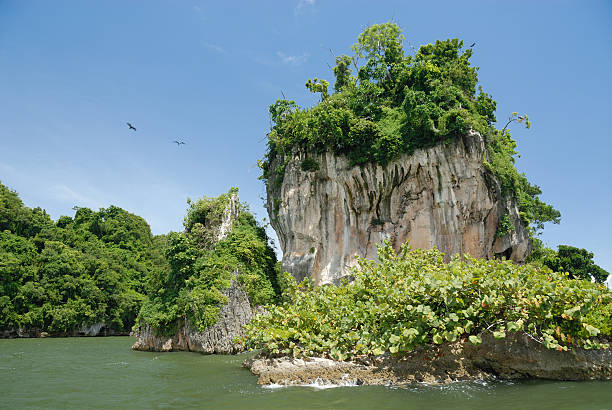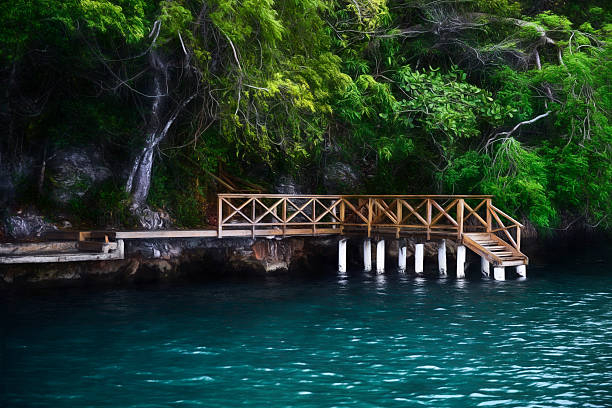Go full ecotourist in Los Haitises
Northeast of the Dominican Republic, just beneath the Samaná Peninsula, lies a rocky karst terrain that appears to have been plucked from the Mediterranean. Against a backdrop of heavily wooded hills, thirty-meter-high rock formations rise out of a large, emerald-colored bay. Turkey vultures circle over these massive mounds, while herons and pelicans sit on the green flora that covers them.
Los Haitises, which translates as "highlands" in Tano, has been preserved since 1976 and is home to rainforest, mangroves of various sorts, over 200 species of birds (it's an important bird-nesting site and sanctuary), many caverns, and some of the most Tano petroglyphs and pictographs in the country. Manatees and dolphins frequently frequent the park's waterways. Furthermore, Los Haitises National Park's life-sustaining role is as significant as its biodiversity: it is the primary water supply for the country's eastern portion. According to the Ministry of Environment, 1.12 million visitors visited the country's protected areas in 2016, with Los Haitises being one of the most popular sites.
The two most popular cave visits on a Los Haitises boat adventure have different qualities. The Tano were known to utilize caverns for ceremonies and to shelter themselves from hurricanes and other impending dangers; the chambers display thousands of year-old pictographs and petroglyphs. Footbridges and clean trails allow easy access to each cave.
Moto Marina in Samaná provides half-day catamaran or speedboat tours along the sheltered bay of the park, allowing visitors to investigate the rock formations, explore the area's mangrove waterways, and see the two Tano caves. Lunch and a swim on Cayo Levantado island are additional options; departures leave from their own dock along Samaná's Bay. Tour Samana with Terry provides comparable tours, with pick-ups available from anywhere on the Samaná Peninsula for a charge. Flora Rides provides small-sized speedboat tours from Las Terrenas to go closer to the mangroves and rock formations.












